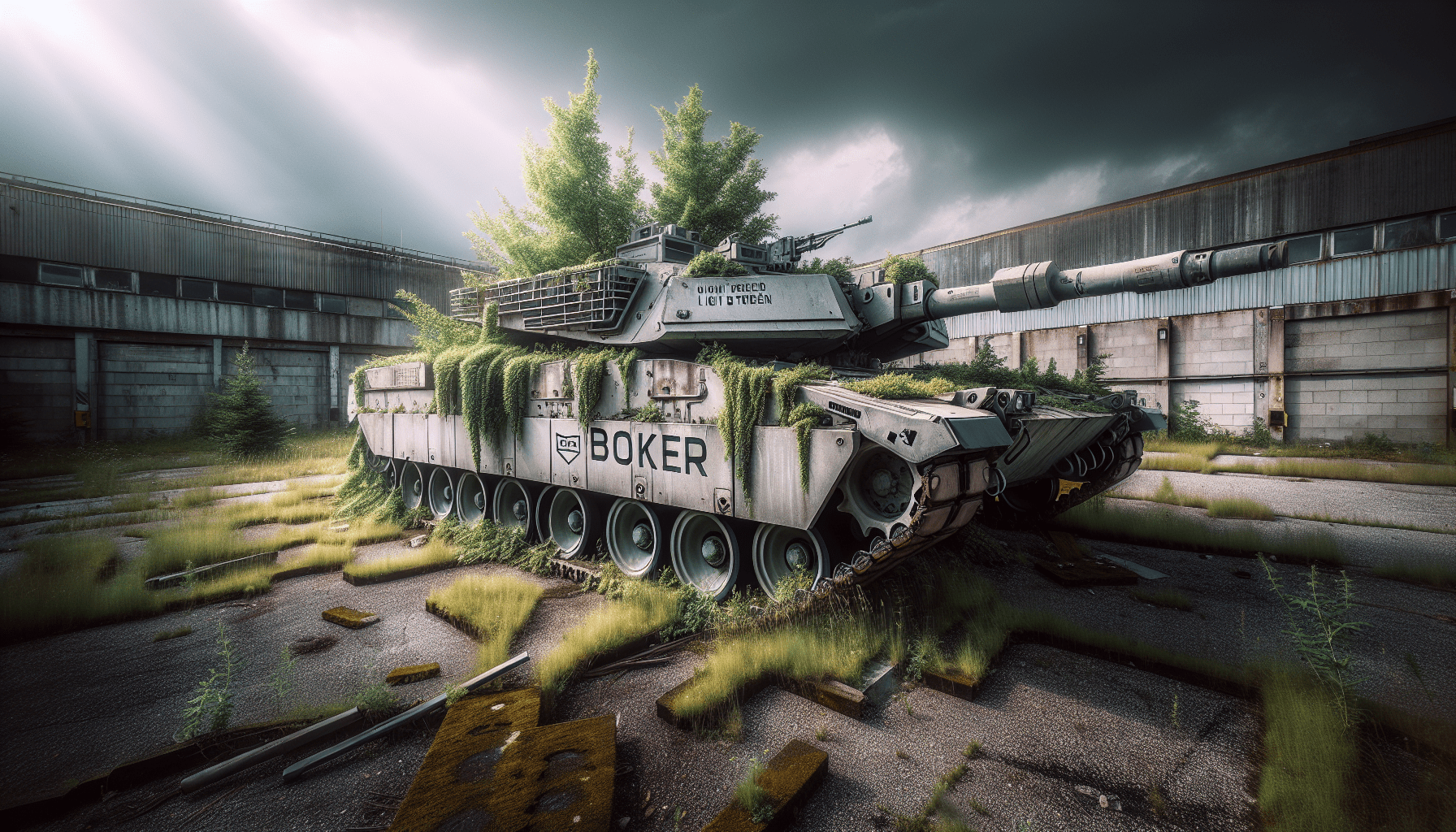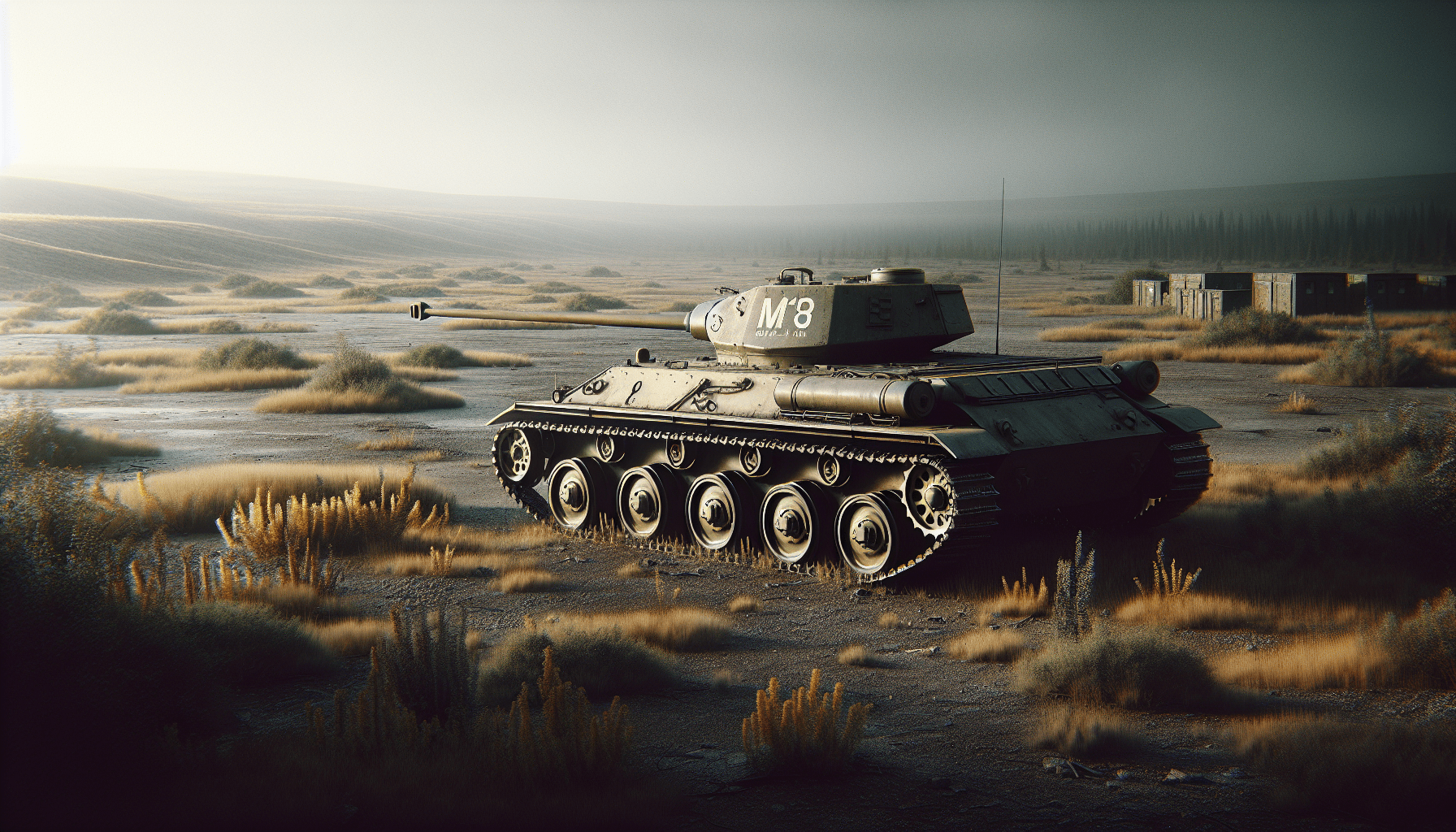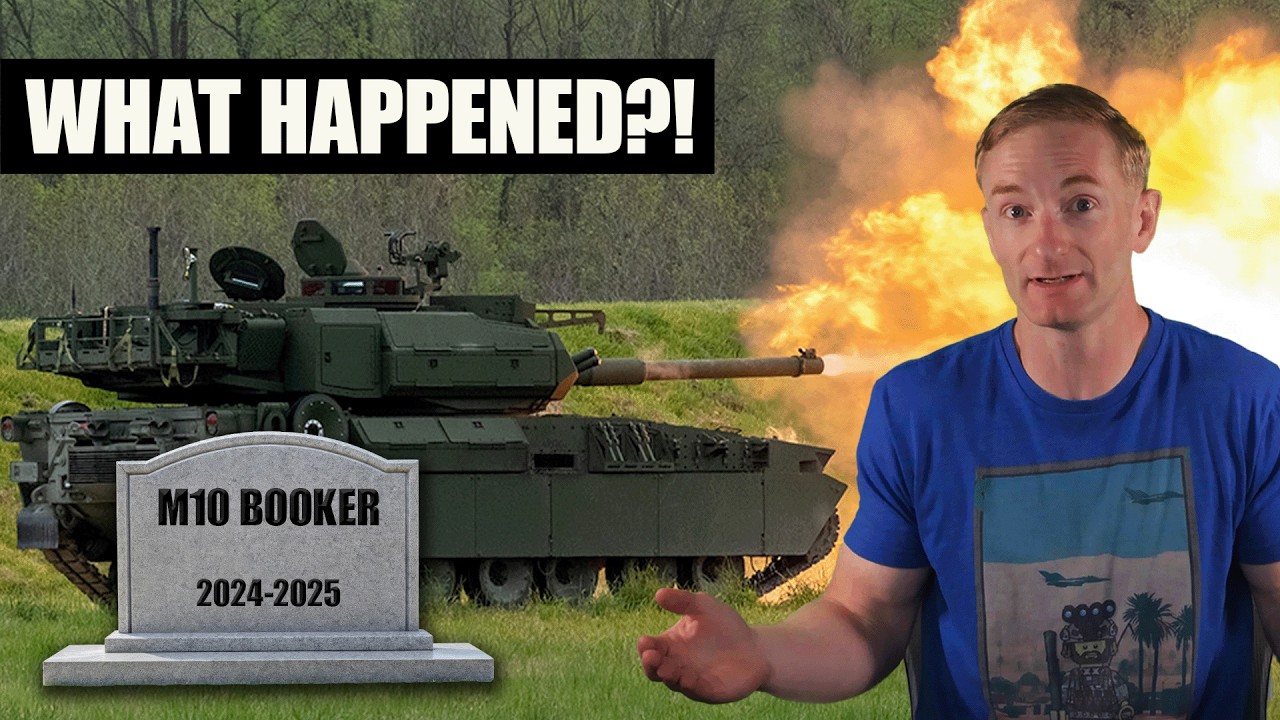The cancellation of the Army’s M10 Booker light tank program represents a significant yet unfortunate chapter in military modernization efforts. Intended to bridge the gap in firepower for light infantry units, the program suffered from critical miscalculations regarding its design classification and operational capabilities. Although the Army invested over $1 billion into the project, it ultimately failed to meet the required standards for reliability and maintenance, resulting in its abrupt termination before any combat deployment.
This article explores the multifaceted reasons behind the M10 Booker’s demise, touching on procurement misjudgments, performance issues, and broader implications for future military vehicle development. By examining the obstacles faced during the program’s lifecycle, as well as the lessons learned, it provides insights into the persistent challenges the Army confronts in its pursuit of effective mobile protected firepower.
Overview of the M10 Booker Light Tank Program
Initial funding and investment in the program
The journey of the M10 Booker light tank program began with a vision for modernized infantry support, underscored by significant funding and investment. The Army allocated over $1 billion to this initiative, envisioning it as a cornerstone of a broader $17 billion program aimed at enhancing the firepower of light infantry units. This investment highlighted a critical recognition of the evolving battlefield and the necessary adaptations to the forces tasked with ground combat, particularly in terms of mobility and protection.
Intended objectives and capabilities of the M10 Booker
The M10 Booker was conceived as a mobile protected firepower vehicle, one that would provide infantry with an agile means of engaging enemy targets while maintaining a sufficient degree of protection. Designed with the ability to execute air drops in challenging environments, the vehicle aimed to bridge the gap in capabilities between heavier main battle tanks and lighter infantry units. Its mission was straightforward: deliver effective firepower to light infantry forces without the logistical constraints that hindered traditional armored vehicles.
Historical context of light infantry firepower needs
Historically, light infantry units have grappled with inadequate firepower, especially in conventional warfare scenarios. This issue dates back to World War II, where early light tanks proved insufficient against fortified positions. The Army’s acknowledgment of this gap, particularly in the face of modern adversaries, underscored the need for a dedicated platform that could provide immediate support without reliance on heavy assets. As military engagements evolved, so did the demand for a versatile and well-armed light tank—a need that the M10 Booker was meant to fulfill.
The Decision-Making Process Behind the Program
Secretary of the Army Dan Driscoll’s insights
In reflecting on the program’s trajectory, Secretary of the Army Dan Driscoll candidly expressed the miscalculations that characterized the development of the M10 Booker. He articulated a fundamental disconnect between the Army’s original requirements for a light tank and the classification of the Booker as a “heavy tank.” This misclassification not only misled program expectations but also set in motion a series of design and operational challenges that would ultimately prove detrimental to the program’s viability.
Misclassification of the vehicle as a heavy tank
The misclassification of the M10 Booker was emblematic of a deeper issue within the Army’s procurement process. Intended to be a lightweight, agile combat vehicle, the Booker was instead weighed down by attributes typically associated with heavier tanks. This misalignment influenced design parameters and operational expectations, raising questions about the adequacy of established criteria in defining the nature and role of modern light armored vehicles.
Initial expectations versus reality in design requirements
Initially, the Army expected the M10 Booker to offer significant advancements in both agility and firepower. However, as development progressed, it became apparent that the reality of the vehicle’s design deviated from those expectations. The complications were twofold: on one hand, the hybrid characteristics of the Booker complicated its performance; on the other, fluctuating requirements throughout its development exacerbated the challenges faced by the engineering teams, ultimately leading to a product that did not align with its intended purpose.

Development Timeline and Key Milestones
2017 Request for Proposal (RFP) and its significance
The formal initiation of the M10 Booker program occurred with the release of the Request for Proposal (RFP) in November 2017. This document outlined the Army’s intentions and requirements for a mobile protected firepower vehicle capable of rapid deployment and versatile battlefield performance. The RFP marked a crucial milestone, setting the stage for competitive submissions from various defense contractors eager to fill the Army’s firepower gap.
Selection of General Dynamics’ design
After an exhaustive evaluation process, the Army ultimately chose General Dynamics’ design for the M10 Booker. This decision was informed by a framework that prioritized technical specifications aligned with articulated Army needs. However, the selection process was not straightforward; it reflected both the aspirations and shortcomings inherent in military procurement, laying the groundwork for the myriad challenges that awaited in the coming years.
Phases of development leading to operational testing
Following the design selection, the development of the M10 Booker progressed through several critical phases, culminating in operational testing. Each phase was designed to refine the vehicle’s capabilities while addressing emerging issues in armor protection and overall functionality. Yet, as these phases unfolded, persistent setbacks manifested, foreshadowing the difficulties that would ultimately compromise the program and lead to its early termination.
Operational Testing and Performance Issues
Overview of the 2023 operational testing phase
The culmination of the M10 Booker program was marked by operational testing in 2023, a critical evaluation phase that aimed to assess the vehicle’s readiness for deployment. This testing was conceived as an opportunity to validate the Army’s investment in the program. However, what emerged from this phase raised alarms among military leadership about the vehicle’s limitations and operational viability.
Critical issues encountered during testing
During the operational testing, several critical issues came to light. The Army discovered concerns that fundamentally compromised the M10 Booker’s operational effectiveness, notably regarding its armor survivability under combat conditions. These issues highlighted that the vehicle was not adequately prepared to withstand the challenges of modern warfare, raising serious questions about its utility on the battlefield.
Specific problems related to armor survivability and crew safety
Particular attention was drawn to alarming deficiencies in the vehicle’s armor protection, alongside concerns about crew safety. Reports indicated that exposure to toxic gases during firing operations posed a serious risk, further complicating the vehicle’s assessment. The cumulative nature of these issues painted a bleak picture for the M10 Booker, leading to a reevaluation of its overall suitability for combat.

Internal Reports and Feedback
Dissatisfaction expressed by military personnel
Internal feedback from military personnel involved in the operational testing underlined a pervasive dissatisfaction with the M10 Booker. The sentiment among troops reflected a disproportionate gap between the expectations set forth by military leadership and the operational reality of the vehicle. As dissatisfaction mounted, the Army’s faith in the Booker began to wane, further complicating the program’s future.
Analysis of the vehicle’s reliability and maintenance needs
Further complicating the program’s viability were concerns regarding the M10 Booker’s reliability and maintenance needs. With an excessive maintenance burden that far exceeded initial projections, the vehicle’s operational readiness was continually hampered. This reliability deficit highlighted systemic flaws in the vehicle’s design and engineering, prompting stakeholders to reconsider the long-term implications of continued investment.
Impact of reliance on General Dynamics for servicing parts
The Army’s reliance on General Dynamics for servicing parts emerged as another significant hurdle. This reliance became a double-edged sword, as issues in the supply chain compounded existing maintenance challenges. The dependency on a contractor that was responsible for both the design and maintenance of the vehicle complicated logistics and contributed to the sense of unease surrounding the M10 Booker program.
Concerns About Repair Rights and Legislative Oversight
Senator Elizabeth Warren’s involvement in the discussion
Amid the rising concerns surrounding the M10 Booker, Senator Elizabeth Warren’s involvement initiated critical discussions about repair rights and legislative oversight in defense contracts. By challenging existing frameworks governing military procurement, she called attention to areas where increased scrutiny could enhance transparency and accountability within the procurement process.
Proposed amendments for repair access in defense contracts
In light of the challenges faced by the M10 Booker program, proposed amendments sought to ensure that military contracts included provisions for better access to repair materials and parts. These amendments aimed to empower the Army and other branches to circumvent reliance on singular contractors, thereby improving operational flexibility and responsiveness in maintaining crucial equipment.
Influence of repair rights on overall program viability
The debate surrounding repair rights highlighted a deeper structural issue within the military procurement process that directly affected the M10 Booker program. Ensuring the Army had the flexibility to access repairs and maintenance services was pivotal to enhancing overall program viability. However, the constraints imposed by the reliance on General Dynamics indicated a need for reevaluation of standard practices in military procurement.

Technical Flaws and Design Limitations
Inconsistent performance in fire control systems
The M10 Booker exhibited technical flaws that became increasingly evident during testing, with one of the primary concerns being inconsistent performance in its fire control systems. The inability to reliably engage targets effectively undermined the vehicle’s promised capabilities, raising alarm among military officials evaluating its potential deployment.
Challenges with vehicle vision systems
Compounding concerns regarding the vehicle’s operational efficacy were challenges related to its vision systems. Flaws in the vehicle’s optics and situational awareness technologies further curtailed its combat viability. The inability to develop reliable visual systems highlighted a that would require comprehensive redesign efforts, requiring substantial investments of time and resources.
Potential costs and time implications of significant redesigns
As technical challenges mounted, it became clear that addressing the M10 Booker’s deficiencies would necessitate significant redesigns. The implications of such an undertaking raised critical questions about the feasibility and prudence of continued investment in the program. Time and resource constraints became increasingly untenable, further supporting the decision to cancel the initiative.
Program Cancellation and Reflection
Official statement regarding the cancellation
In an official statement regarding the cancellation of the M10 Booker program, military leaders acknowledged the myriad issues that plagued its development and testing phases. The Army’s concession of failure to meet the initial objectives reflected a broader reckoning with the complexities of modern military procurement and program management.
Acknowledgment of mistakes in the procurement process
The decision to cancel the M10 Booker also served as a public acknowledgment of mistakes in the procurement process. This recognition signaled a potential turning point for the Army, encouraging a reevaluation of acquisition strategies and operational requirements in the face of evolving security dynamics.
Long-term effects of the cancellation on the Army’s capabilities
The cancellation of the M10 Booker has significant implications for the Army’s capabilities moving forward. As light infantry units continue to confront challenges in securing effective firepower, the departure of the Booker from the inventory creates an operational void that must be addressed through either alternative means or new program developments. The broader ramifications of this cancellation promote reflection on the strategic direction of future military modernization efforts.
Future of Light Tank and Infantry Support Vehicles
Examination of potential replacement vehicles
In the wake of the M10 Booker’s cancellation, the Army is left grappling with the need for a replacement vehicle that can fulfill the requirements of mobile protected firepower. Ongoing discussions have centered on several potential candidates; however, each alternative introduces its own set of limitations and challenges. The exploration of replacement options underscores the Army’s commitment to enhancing its infantry capabilities while recognizing the imperative to avoid repeating past mistakes.
Delays and issues with other options like XM30 and infantry squad vehicle
As the Army considers alternatives, delays and complications with existing platforms such as the XM30 and infantry squad vehicles further complicate the landscape of light tank solutions. These challenges invoke concerns about whether current programs can deliver on their promises while also addressing the pressing firepower needs of infantry units on the ground. The results of these developments will be critical in shaping the Army’s modernization strategy.
The Army’s modernization efforts moving forward
The cancellation of the M10 Booker program places additional pressure on the Army’s broader modernization efforts. As military leaders seek to adapt to contemporary operational environments, the emphasis on timely and effective acquisitions remains paramount. The Army must navigate the complexities of evolving warfare dynamics while ensuring that its infantry remains equipped with the necessary tools for success.
Conclusion
Summarization of critical points regarding the cancellation
In summary, the cancellation of the M10 Booker light tank program encapsulates a multitude of challenges faced by the Army in contemporary military procurement. From misclassification issues to technical flaws, the operational testing phase uncovered serious deficiencies that ultimately led to a reevaluation of the program’s viability. The admission of procurement missteps highlights the need for reform within the acquisition process.
Reflection on lessons learned for future military projects
The lessons learned from the M10 Booker experience are invaluable for future military projects. A constructive approach towards clearer communication, rigorous testing, and enhanced scrutiny of defense contracts could mitigate the risks associated with similar endeavors, thereby improving outcomes for future acquisitions.
Final thoughts on the impact of M10 Booker on the Army’s modernization strategy
Ultimately, the M10 Booker serves as a case study in the complexities and challenges of military modernization. As the Army contemplates its future with light tanks and infantry support vehicles, the road ahead remains fraught with obstacles and opportunities for innovation. The commitment to learning from past mistakes will be critical in shaping a robust framework for enduring military effectiveness in an ever-evolving operational landscape.
